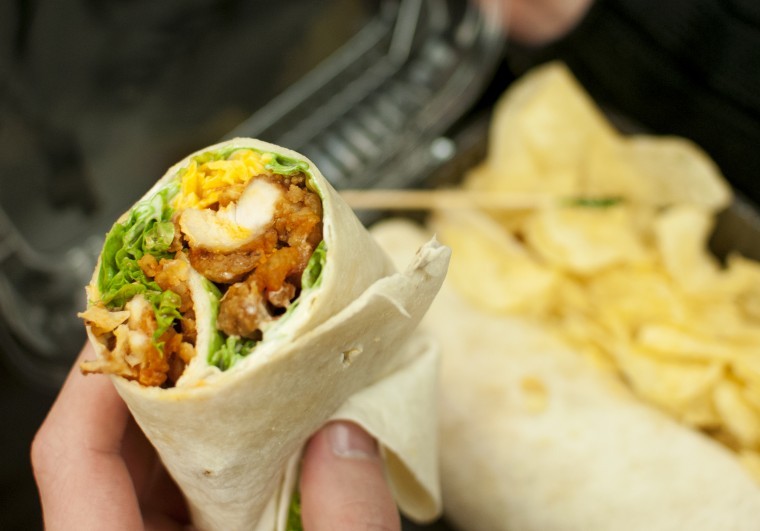
That’s a wrap
Whether it’s the classic buffalo chicken, the Maryland club or a simple turkey and cheese, no wrap will ever be the same.
After Dining Services employees went through training sessions over the summer, which included how to construct the wraps, officials decided to make several changes to the wrap-making process, including cutting vegetables, chicken and other sandwich products, rather than dicing them, and leaving the ends of the wraps open instead of folded in.
“[Employees] have been instructed not to dice these products. Tomato slices are to be cut in half, grilled chicken is to be sliced, fried chicken tenders are cut into four or five pieces and cheese slices are left whole,” head chef John Gray said. “Operations managers, supervisors and I watch employees make sandwiches and wraps. If something is made incorrectly, the employee is quietly spoken with or shown how to properly make the sandwich or wrap.”
Although she complained to the workers who make the wraps, sophomore Italian major Kaitlin Paddy said she didn’t have any luck in changing the wrap-making process, which made her stop buying them altogether.
“They said you have to talk to the head chef because it is only their idea and none of them are agreeing with it,” she added.
The changes were for the best, Gray said, to help improve the overall product and move along the often-snaking sandwich lines.
“This was done to increase the speed of the lines, give a better plate presentation and increase the edibility of the wrap,” Gray said.
Many students, however, said the changes have made their meal experience more difficult.
“It’s really difficult to eat because everything falls out of the bottom. It’s not that hard to fold the bottom end,” said Claire Tomaszewski, a freshman materials science and engineering major. “If I am turned off by it, some of other people must be, too.”
Gray said closing the ends of the wrap wasted time since they often didn’t include the contents of the sandwich.
“With the ends folded in, you would get three or more bites that were tortilla and no filling,” he said. “By leaving the ends open, the filling products are spread evenly throughout the wrap.”
Sophomore biology major John Morgan said he preferred the way the wraps were made last year.
“I like them better when they’re folded in, and I do like the end piece cause I have a bit of extra wrap,” he said.
So far, officials haven’t changed the new process, leaving the method, just like the wraps, open ended.
“We haven’t been exposed to the other types of wraps,” said freshman psychology major Mica Cocco. “But we definitely think they’re hard to eat and they should accommodate for us.”



